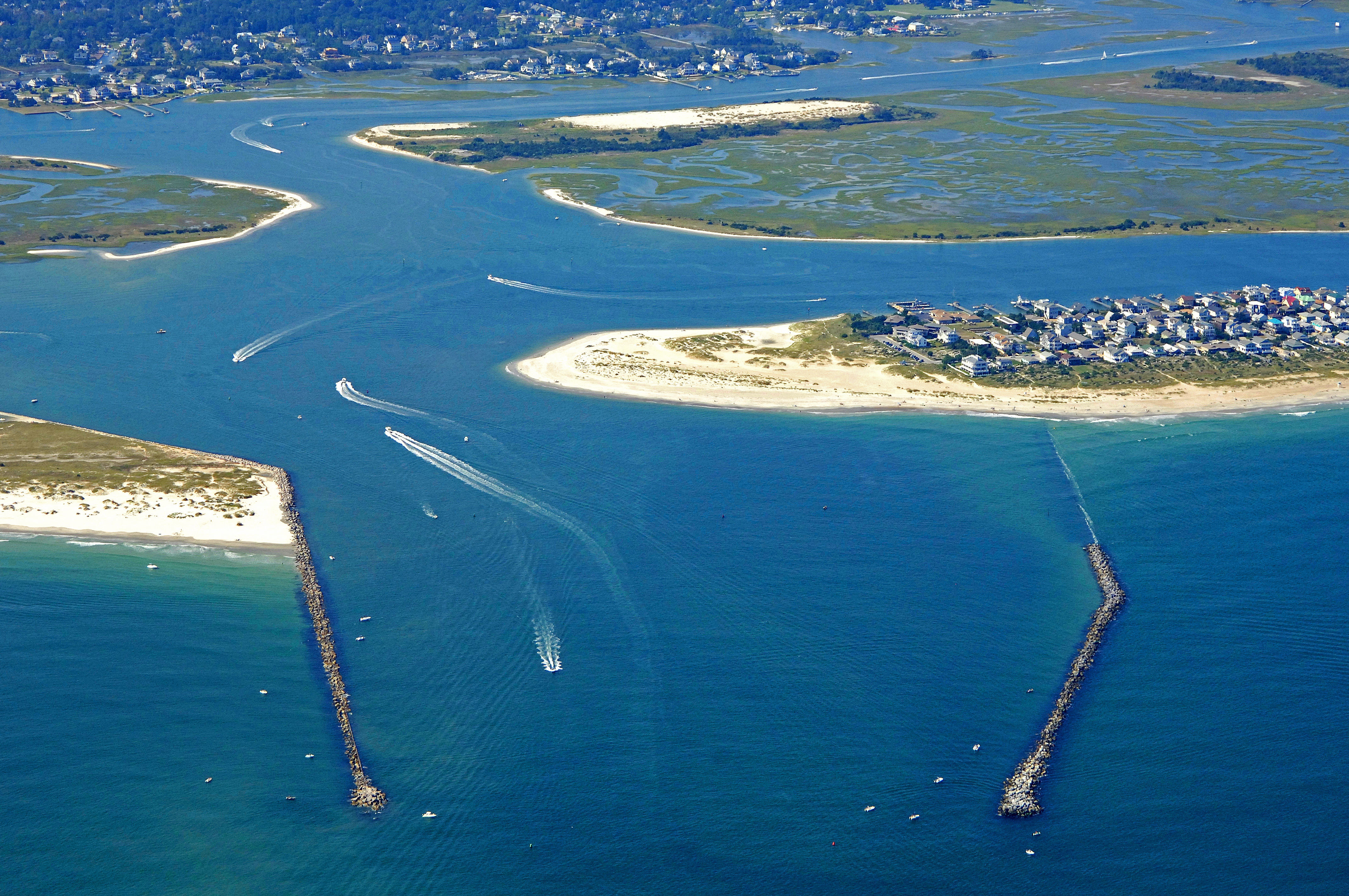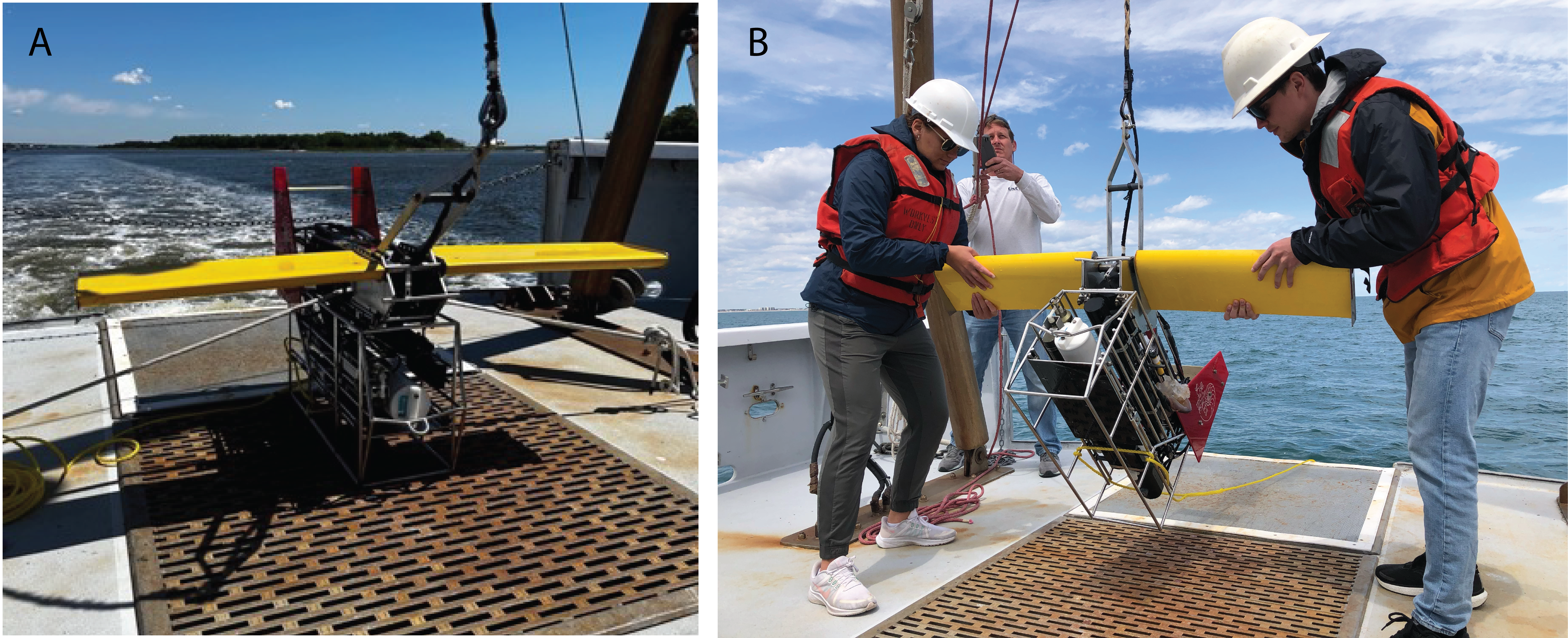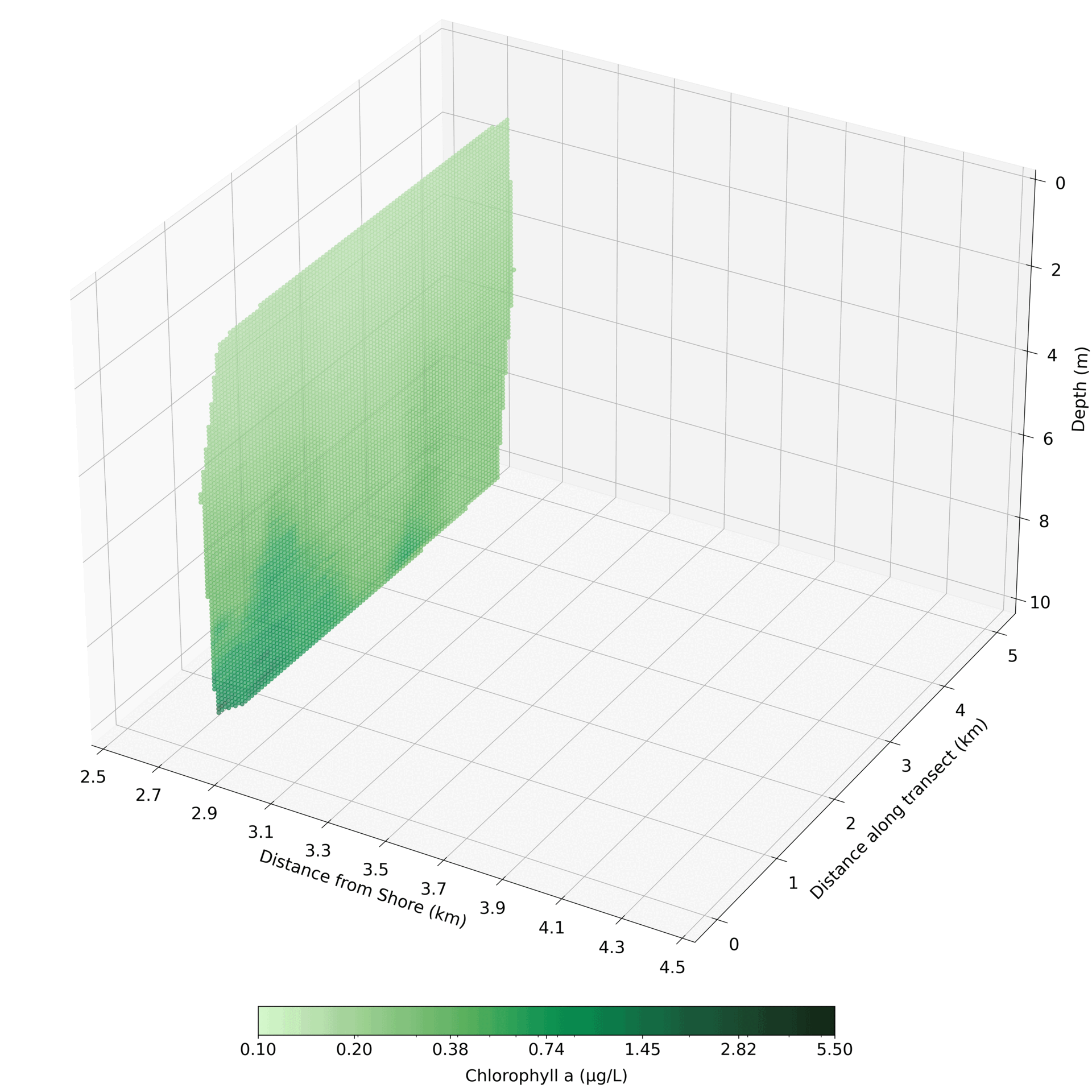
Understanding Coastal Water Quality at the Masonboro Inlet
Introduction
In our ongoing research efforts to monitor coastal water quality in the Cape Fear River Estuary, in-situ data collection remains a foundational element. This hands-on approach allows us to measure direct environmental parameters such as chlorophyll a, salinity, turbidity, and other crucial metrics. This fine-scale data helps us accurately understand the immediate conditions and processes occurring within the water column.
The Role of In-Situ Data
In-situ data collection provides ground-truth measurements that are essential for calibrating and validating satellite imagery data. By employing the Sea Sciences Acrobat, a towed oscillating vehicle, along with auxiliary sensors, we capture a detailed snapshot of the water column’s characteristics. The Acrobat allows for rapid, high-resolution, 3-dimensional profiling over large spatial areas, ensuring that we capture comprehensive information on the physical and chemical properties of the water column.
 Figure: Deploying the Acrobat during an in-situ data collection mission.
Figure: Deploying the Acrobat during an in-situ data collection mission.
Data Collection Method
During our field missions, we navigate along strategic transects using the R/V Cape Fear, collecting data up to depths of 10 meters. The paths are carefully chosen to capture a representative cross-section of the estuarine environment, including mixing zones and areas influenced by tides and river inflows. The Sea Sciences Acrobat, equipped with sensors for chlorophyll a, salinity, temperature, turbidity, and dissolved oxygen, continuously collects data as it moves up and down through the water column.
We then analyze this data to understand the three-dimensional variability of the estuarine environment. This allows us to identify critical gradients and hotspots that are indicative of dynamic water quality changes.
 Figure: The path of our in-situ data collection at the mouth of the Masonboro Inlet.
Figure: The path of our in-situ data collection at the mouth of the Masonboro Inlet.
Results
Our 3D in-situ data collection method provides a comprehensive understanding of local water quality, crucial for environmental conservation. Initial analyses show significant spatial and temporal variability in indicators like chlorophyll a and salinity. The detailed maps created from this data reveal clear patterns and hotspots of environmental change, illustrating variations not apparent in surface measurements alone. By integrating these findings with satellite data, we enhance our understanding of estuarine processes and improve the monitoring of the ecosystem’s health and productivity.
 Figure: Linearly interpolated chlorophyll a measurements collected along the transects.
Figure: Linearly interpolated chlorophyll a measurements collected along the transects.
Additional Considerations
- Temporal Variability: In-situ data collection over different seasons and tidal cycles provides insight into the temporal changes affecting estuarine water quality.
- Environmental Monitoring: The data collected helps to identify potential areas of concern related to pollution, eutrophication, or sediment resuspension.
- Model Validation: These ground-based measurements serve as calibration and validation points for predictive models that aim to forecast future conditions.
For more detailed insights into our in-situ data findings, stay tuned to our upcoming posts!